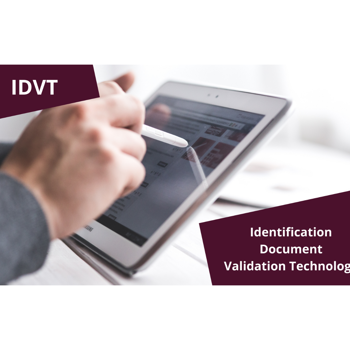Guide to IDVT (Identification Document Validation Technology)
Hybrid working is here to stay, and digitalisation is going to be key for hiring managers across all sectors in onboarding new candidates; as shown by the recent IDVT right to work legislation brought in by the Home Office to allow more flexibility to the hiring process.

Everything you need to know about the new IDVT legislation
What is IDVT?
From 1st October 2022, having initially planned to launch on 6th April 2022, the Home Office have brought into place the need to use Identification Document Validation Technology (IDVT), where employers will carry out digital checks on British and Irish citizens who hold a valid passport.
What do you need to consider?
IDVT comes in various forms, with different capabilities and costs, and you will need to assess the levels of assurances that are acceptable for your business by taking into account of:
- The risks you need to manage
- The costs of the system
- The numbers of identity documents that you anticipate that you will need to check
- Your particular requirements when choosing what types of systems to procure
However, one of the biggest considerations is the timeframe of making sure you have the right solution in place by the deadline in October 2022.
What are the challenges to implementing IDVT?
There are many challenges to implementing IDVT, as a new legislation poses a new way of running your business. Examples include:
- Cost - there will be associated costs in adopting IDVT as with any system implementation. However, automated screening software is proven to deliver huge efficiencies and operational cost savings by managing processes digitally.
- Fairness - there are some concerns about whether digital checks are fair to every group, for those unable to use the digital process and whether the government is doing enough meaning some processes still need to be done manually.
- Technology - working with an experienced service provider who can walk you through the transition from manual to digital processes is vital. With cloud-based technology the set-up is intuitive and easy to configure.
- Process - making the change before October 2022 is a legal requirement. Preparation is key. Many organisations have already adopted screening software ahead of the deadline in order to manage their risk and improve efficiencies
Why is IDVT being used?
Enabling the use of IDVT software for right to work, right to rent and DBS checks will help to support long-term post pandemic working practices, accelerate the recruitment and onboarding process, improve employee mobility and enhance the security and integrity of the checks.
The technology utilised across the identity process removes human error in terms of identifying fraudulent documents or inaccuracies and will support the Home Office, DBS and DCMS in driving improvements through their delivery partners.

What does IDVT mean for recruiters?
Hybrid working is here to stay and digitalisation is going to be key in 2022 in onboarding new candidates; as shown by the recent IDVT right to work legislation change coming into effect from October 2022.
The change will help recruiters to expedite the onboarding process and make hiring in desperate locations easier and more secure.




